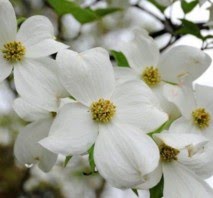
House and Garden TV or HGTV has some of the best tips and techniques for creating unique gardens. Since garden space or arable land in an urban setting is hard to find, urban gardeners have use creative solutions for this lack of planting space.

By pruning fruit bearing trees with proper pruning to train the branches to espalier along a fenceline, garage, or wall, the urban gardener can transform unused blighted landscapes of the ghetto into spaces of beauty and nurishment. Since the price of fresh produce is through the roof, the Ghetto Gardener recommends planting fruit trees in urbanscapes.
From an HGTV's "Art of Espalier":
A few hundred years ago in Europe, garden space was so limited that gardeners began growing trees, usually fruit trees, against walls. "Espalier" (from the French word for frame or trellis) is a horticultural technique that trains a plant to grow in two dimensions instead of three. Today, espalier has evolved from a space-saving technique into an art form.
Tree artist Sean McNeil of northern California, an area known for its apple trees, presses the branches of apple trees against a trellis and attaches them to promote the growth of apples along the lateral stems. He explains the espalier technique:
- Start with a bare root tree on dwarf or semi-dwarf stock, and prune it to about two feet tall. Select a bud on the upward-growing branch, which has two lateral buds just below it. Prune just above that bud.
- When choosing a trellis material, keep aesthetics in mind; heavy-gauge wire makes an effective trellis without detracting from the shape of the tree as a heavy wood trellis would.
- To attach branches to the trellis, use stretchy tie tape, which won't damage the bark like string or wire would.
- If you train a tree against a wall, choose a south-facing wall that gets plenty of sun and a little afternoon shade, or an east-facing wall that traps warmth. This creates a microclimate that allows fruit to mature even in cooler climates.

By the second year, a tree puts more energy into fruit production, which means less pruning but more support as the fruit grows heavier. The open two-dimension frame exposes the fruit to more sun and air flow, and the fruit is more accessible than on a standard tree














No comments:
Post a Comment